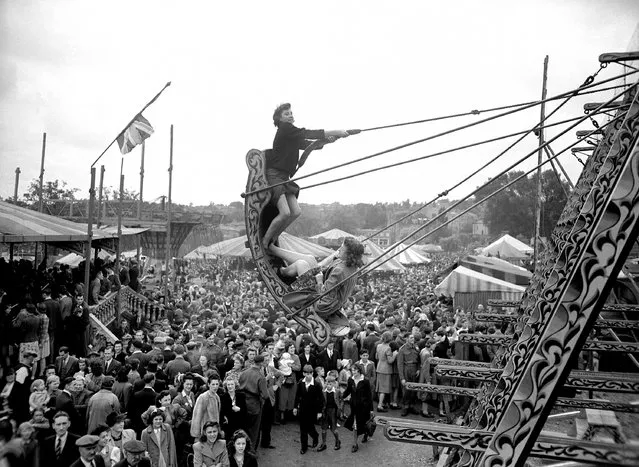
A view of the holiday crowd on Hampstead Heath, London, on August 2, 1943, with the chair-o-planes swinging high. (Photo by AP Photo)
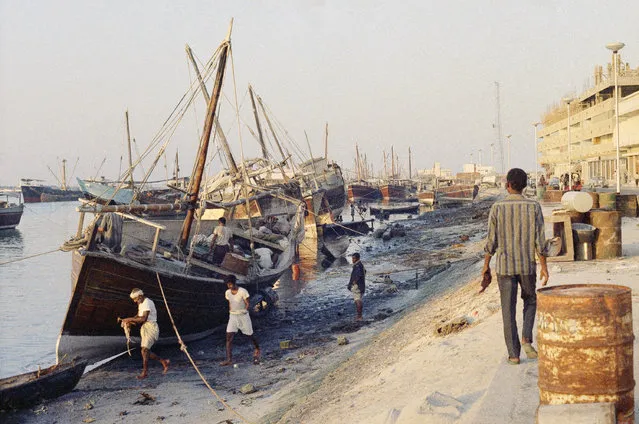
Dubai Creek, The Smugglers Cove through which 170 million dollars worth of gold bullion flows every year on December 12, 1969. (Photo by AP Photo/Stf/Ess)
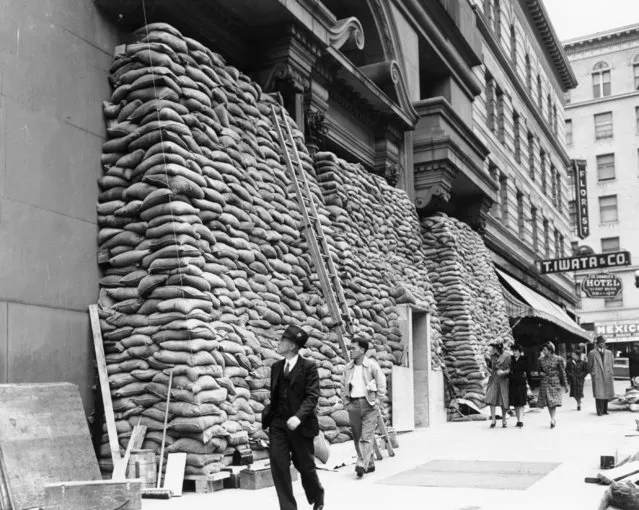
As protection against possible Japanese air raids, sandbags are piled as high as the second story against the telephone company building in San Francisco, on December 13, 1941. (Photo by Jack Rice/AP Photo)
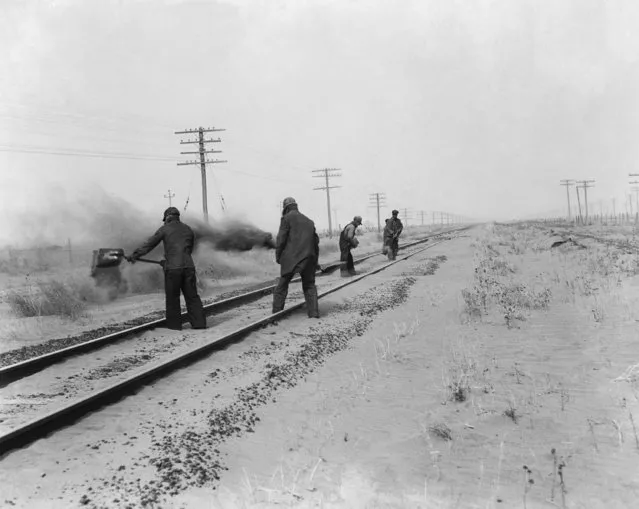
Keeping the rails clear so trains could go through was one of the major tasks of rail road men in western Kansas during the dust storms. Here is a group sweeping the dust from the tracks, April, 13, 1935, Syracuse, Ks. (Photo by AP Photo)
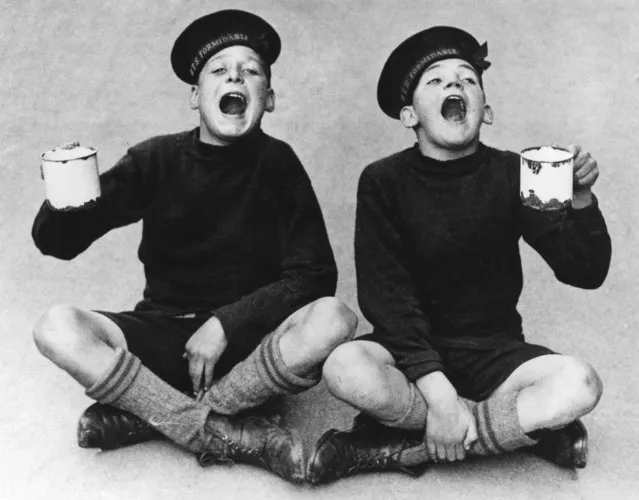
Two young cadets at the Royal Nautical School, Portishead, Somerset, gargling as a preventative measure against an influenza epidemic, 22nd October 1934. (Photo by Fox Photos/Getty Images)
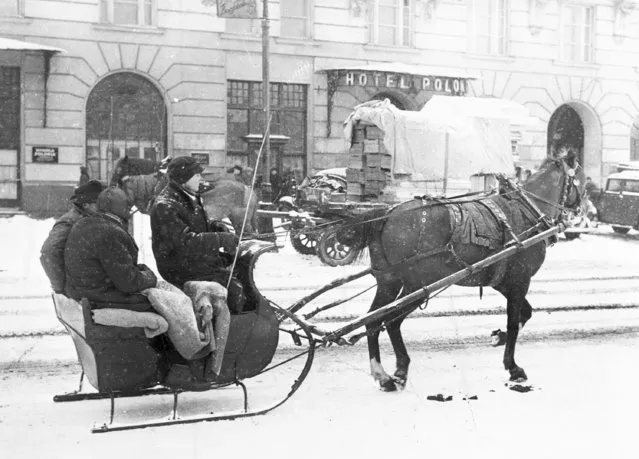
A smallhorse-drawn sleigh carries passengers during a fall of snow through the streets of Warsaw, Poland, on December 14, 1946. Due to the serious transport shortage in the Polish capital, the horse-drawn vehicles have been given a new lease of life. (Photo by AP Photo)
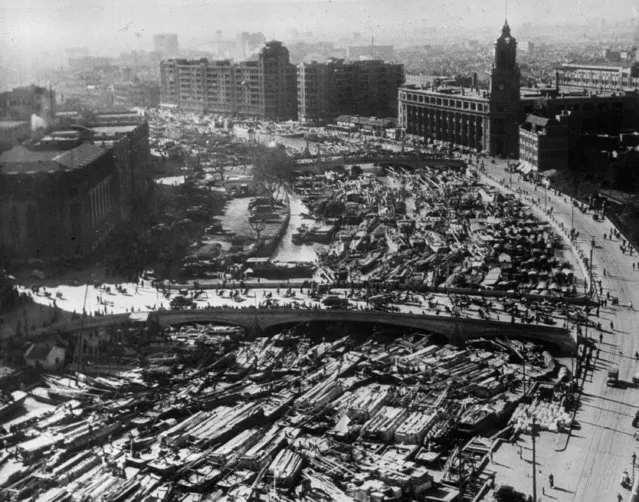
Sampans are squeezed nearer and nearer to the mouth of Yangtze river, Shanghai, China, December 21, 1948, as more refugees flee from the advancing Communist troops arrive in the city. Bridge in the foreground is Chapoo Road Bridge. (Photo by AP Photo)
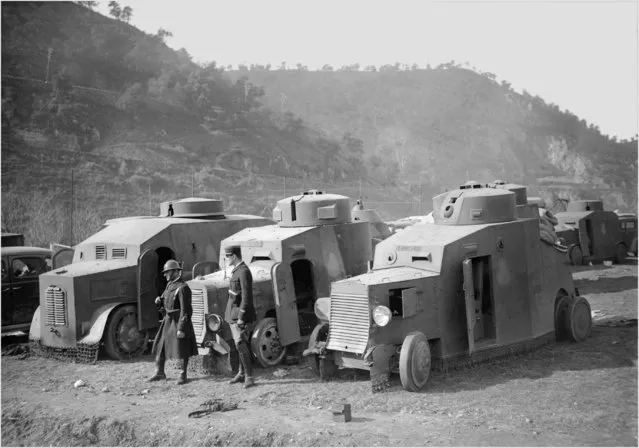
Picture dated February 1939 showing a French soldier and a French policeman standing guard next to armored vehicles of the Spanish Republican army seized and disarmed in the French Pyrenees after the Republicans lost the Spanish civil war against Franco. (Photo by STF/AFP Photo/Getty Images)
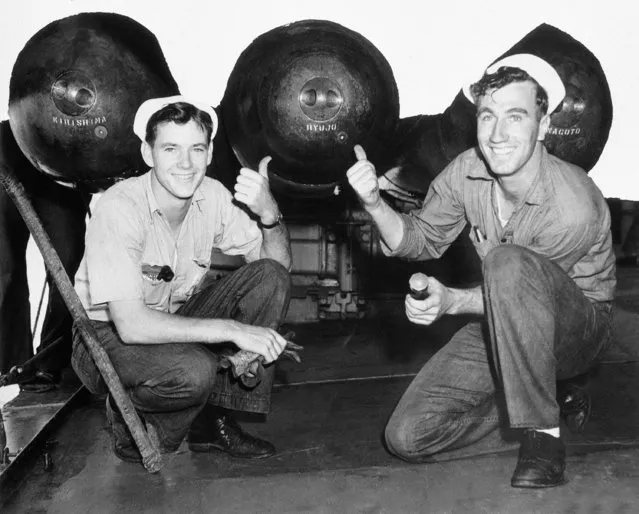
Torpedoes and depth charges carried by destroyers of the United States fleet, display a personal touch these days. These torpedo warheads carry the names of Japanese aircraft carries and battleships shown February 3, 1942. (Photo by AP Photo)
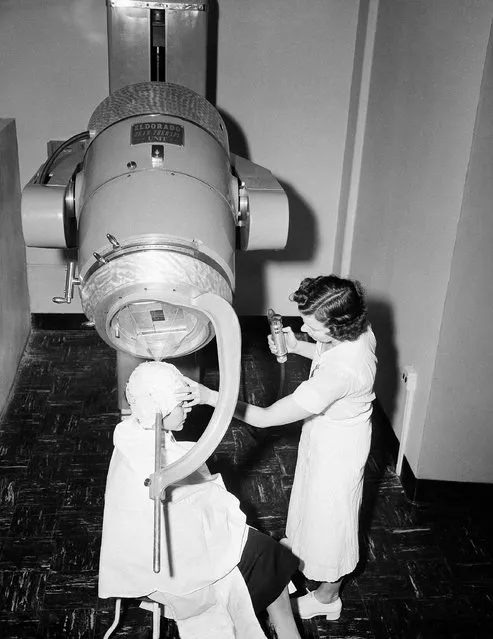
Radiation technicians Nancy Brown, right, and Isabelle Nauer illustrate the use of the Cobalt “bomb” machine at Montefiore, Hospital in New York on Feb. 7, 1953, as the new therapy unit makes its bow. Miss Nauer wears a plaster cast of the type moulded on a patient's head in a brain tumor case. After conventional x-rays locate the tumor, the cast is marked so that the Cobalt unit can be directed at the same point during each treatment. The “bomb” came from Canada's Chalk River Atomic Energy pile and produces more radiation than all the world's medically used radium. (Photo by AP Photo/JR)
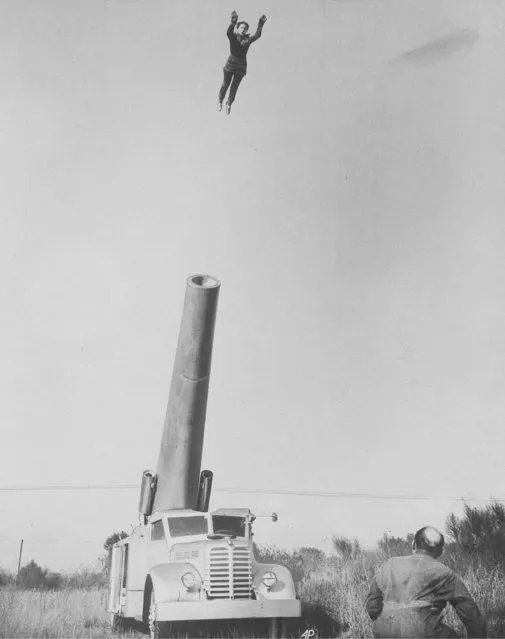
The Zacchini family have been catapulting members of their family, by use of a real charge of powder, since the 1920s. Here, one of the Zacchini girls, Duina is shot from a specially built mortar to a net some 100 feet away, January 13, 1943. (Photo by AP Photo)
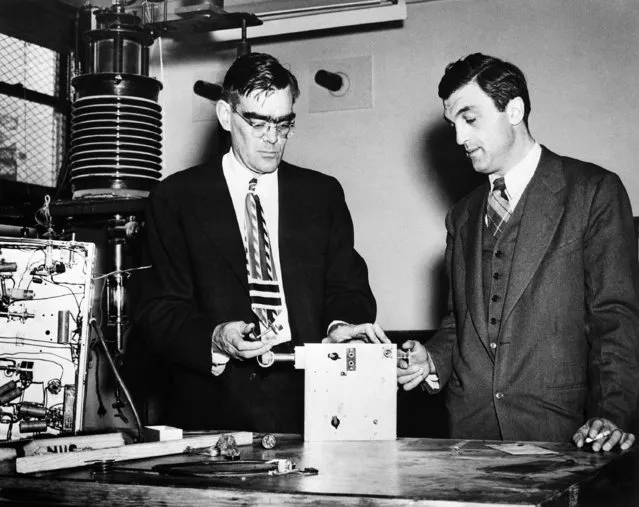
Dr. Felix Bloch, right, Stanford University professor of physics, and Dr. William W. Hansen, director of the Stanford Microwave Laboratory, examine a working model of equipment used in their research work, January 23, 1947, in Stanford. (Photo by AP Photo)
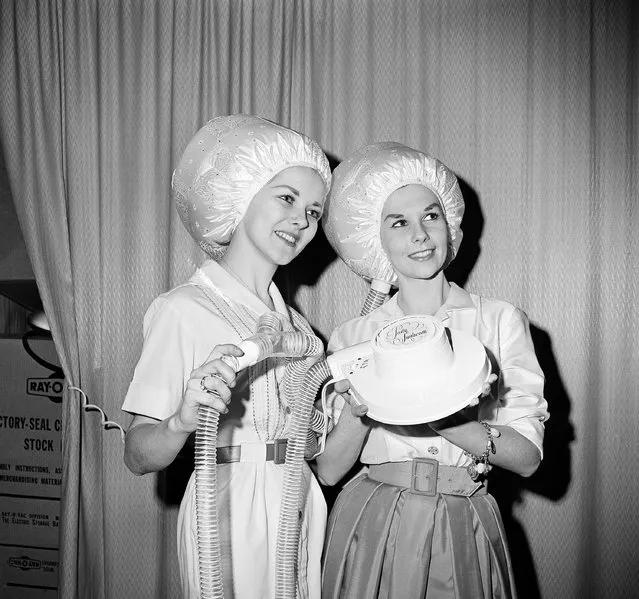
Tandem hair drying is possible with a new two-hood attachment for any electric hair dryer manufactured by Postcraft Co of Tucson, Ariz., shown in Chicago, January 27, 1965. A Y adapter permits two hoses to be attached to the dryer. (Photo by Edward Kitch/AP Photo)
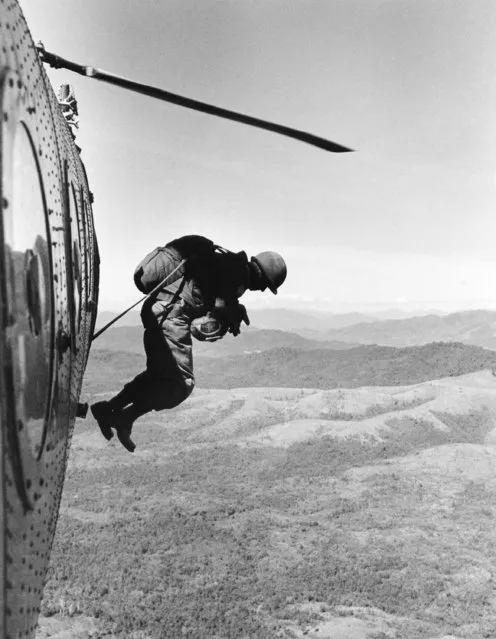
American Special Forces Troops in South Vietnam, working with Vietnamese Rangers, are frequently called upon to parachute into the almost inaccessible central highlands region considered a Communist guerrilla stronghold, to make intelligence patrols. These groups go through frequent training sessions to maintain their efficiency in jumping. One Special Forces man jumps from an H-21 helicopter in the area near Tacanh, north of Kontum, January 4, 1963. (Photo by AP Photo/Faas)
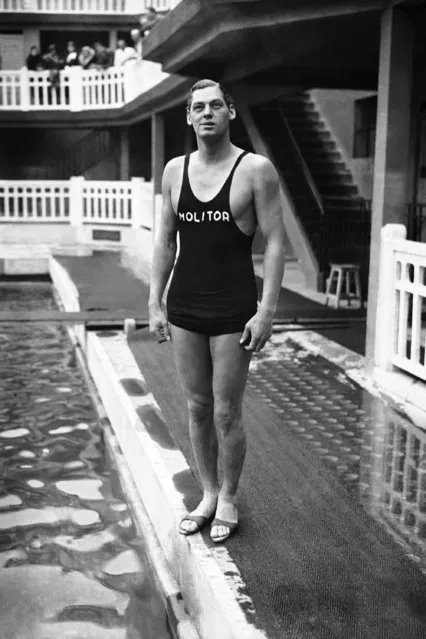
Olympic gold medal winning swimmer and actor Johnny Weissmuller, born Johann Peter Weissmuller, in his swimming costume pictured around June 3, 1930. (Photo by AP Photo)
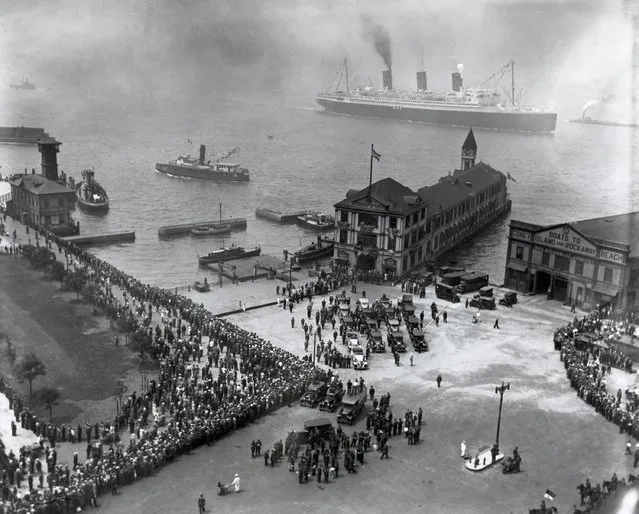
Thousands of people gather to welcome aviator Amelia Earhart Putnam at the Battery in New York City on June 20, 1933. The crowd cheered Earhart, who flew her plane from Newfoundland to Ireland in 15 hours one month ago. (Photo by AP Photo)
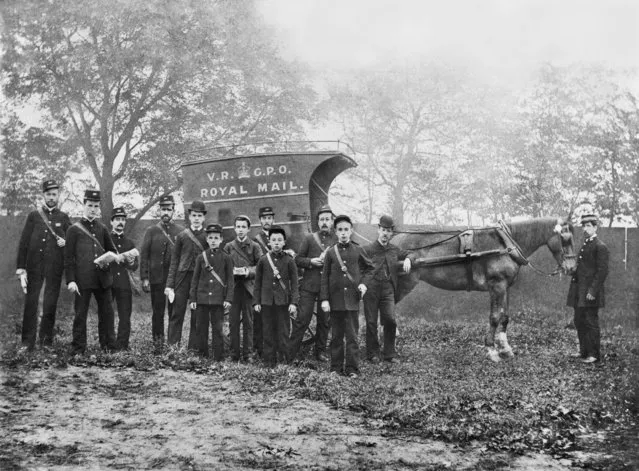
Postmen with the first mail van in Prestwich, Greater Manchester, circa 1890. (Photo by Past Pix/SSPL/Getty Images)
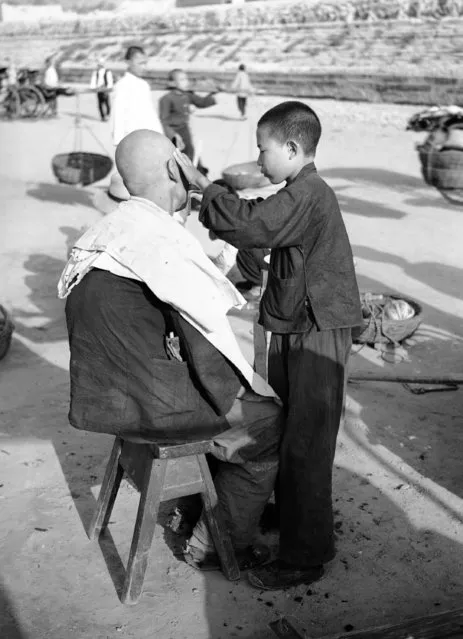
In China boys from 10 to 16 serve as barbers. Their shop is the open street, and anything serves as a chair, a haircut costs a penny, and a shave a half penny. The typical hairdresser's scene, in Peking, on October 23, 1936. (Photo by AP Photo)
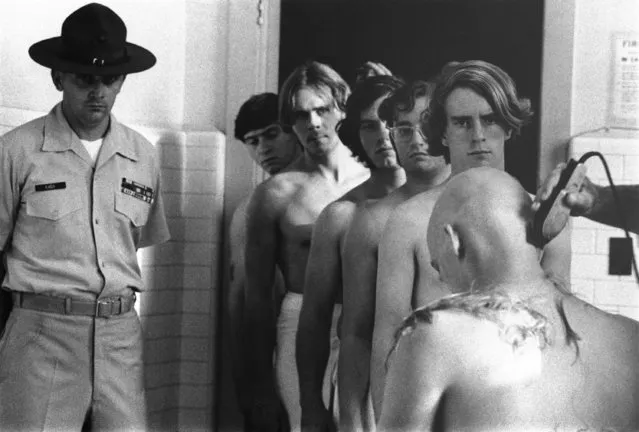
Young Marine trainees line up to have their hair shorn at the Marines training camp in Parris Island, S.C., October 20, 1971. (Photo by Eddie Adams/AP Photo)
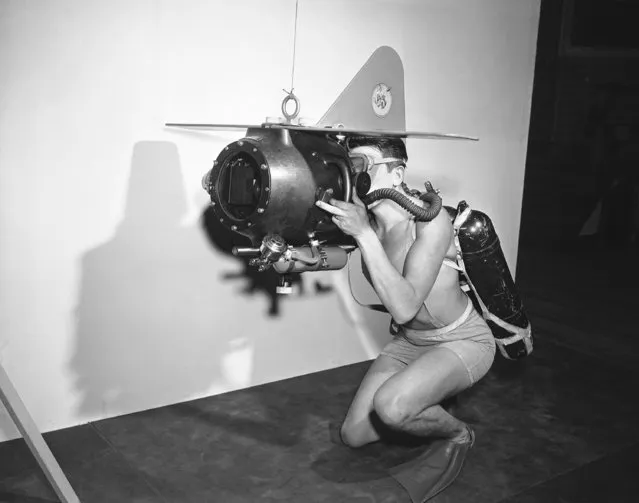
Gerald E. Darrab, Ph2, U.S.N., demonstrates the completely mobile 35 mm under-water motion picture camera which will be used by the U.S. Navy. It was at the U.S. Naval Photographic center Anacostia, Washington on October 31, 1950. The camera will make the diver-photographer entirely independent on surface assistance and is designed so that it can be completely operated from the outside of the housing. External controls are provided for the lens diaphragm, focus, and starting switch. The unit has detachable wings and vertical rudder which aid in transporting and stabilizing the camera under-water. (Photo by Bill Allen/AP Photo)
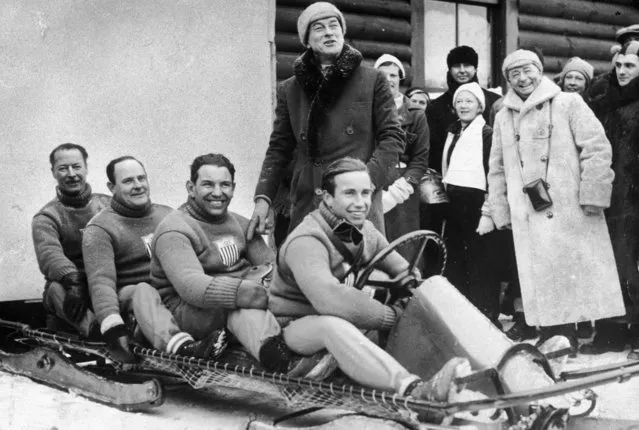
Full-length image of the four American athletes comprising the United States Olympic bobsled team, seated in their bobsled, with smiling onlookers, Lake Placid, New York, February 1932. The U.S. team won the Olympic title that year. (Photo by New York Times Co./Getty Images)
08 Feb 2018 07:20:00,
post received
0 comments
